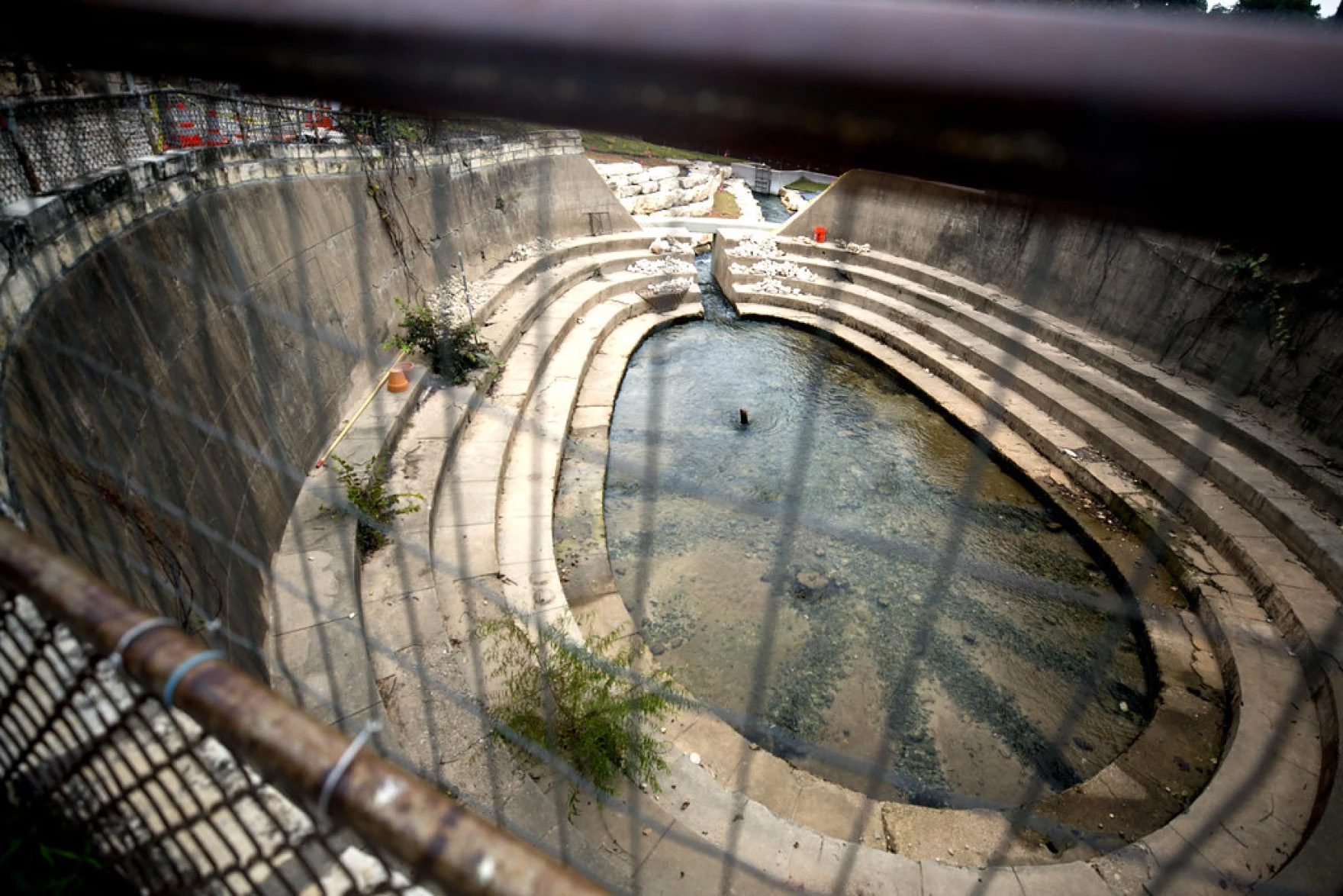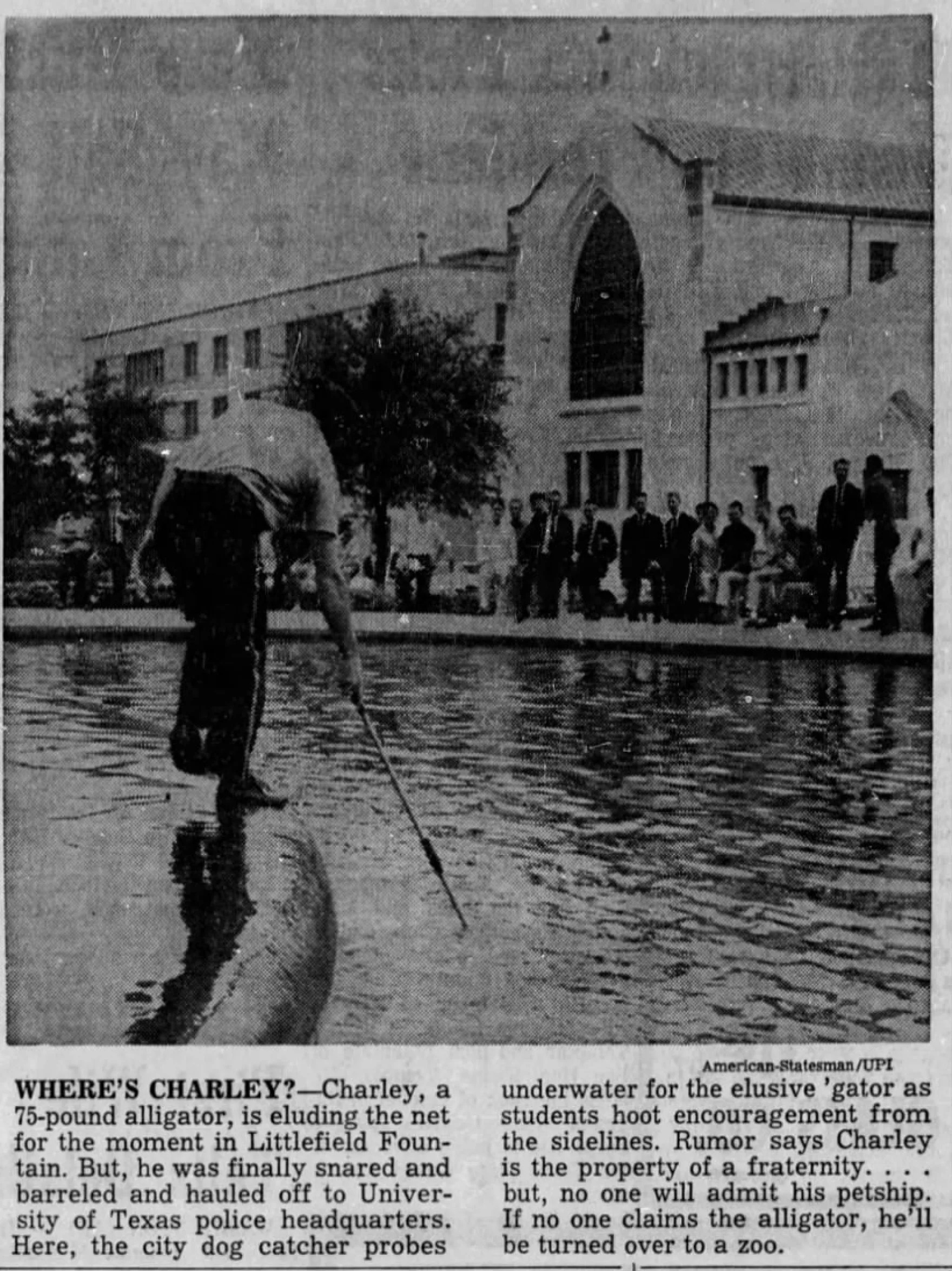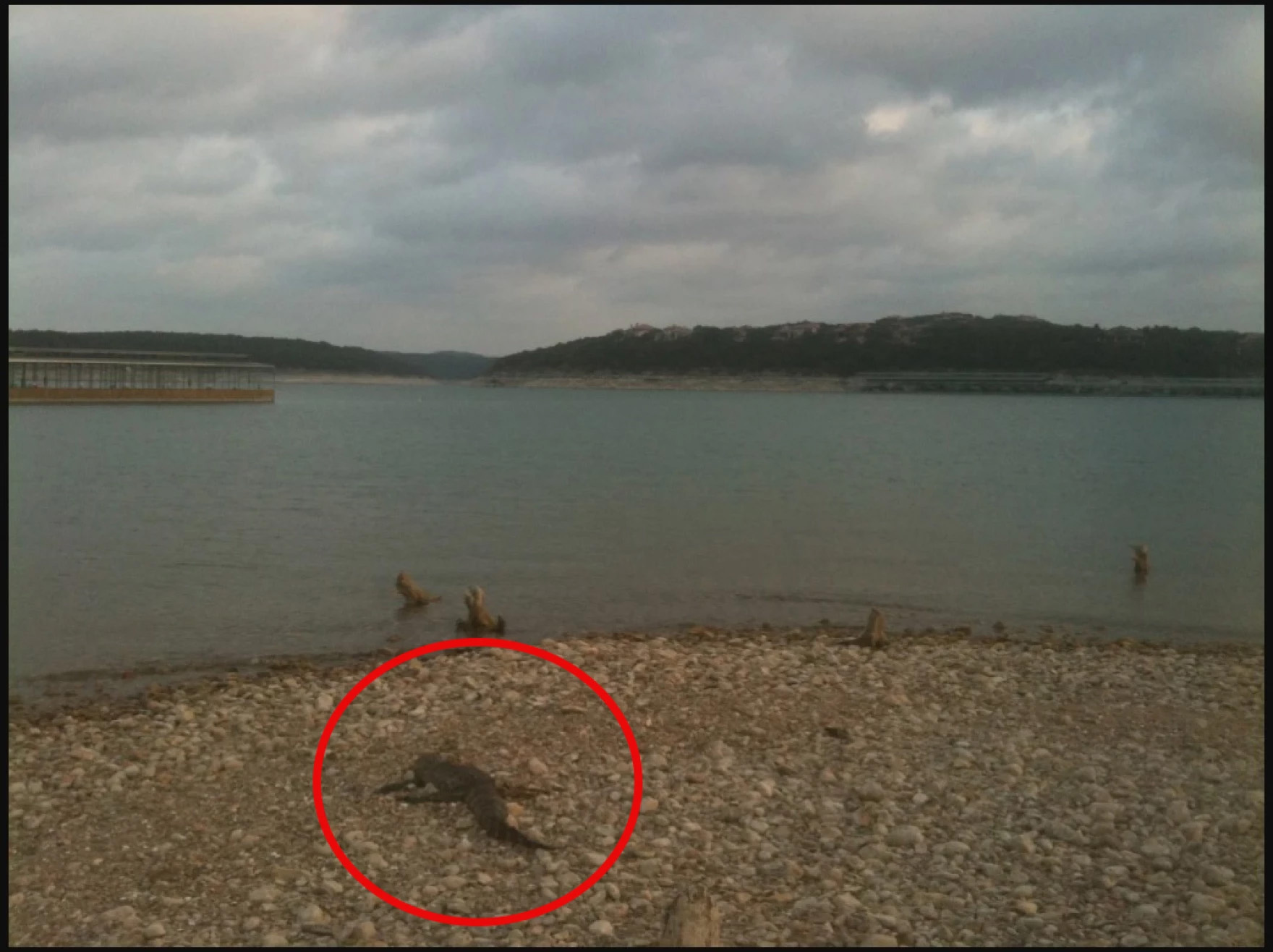From KUT News:
This story was originally told live at the Paramount Theatre on Oct. 11, 2023. Our next live show is on Oct. 23 at Bass Concert Hall. Get your tickets now!
Austin is a town of many mascots. The bats under the Congress Avenue Bridge. The salamanders of Barton Springs. Even the sneaky grackle has become a beloved icon.
This is not a story about those animals. This is a story about alligators.
Gators are not something that people often associate with Austin, but they do appear in our local mythology. It was one of those appearances that prompted listener Jade Florence to reach out to ATXplained with a question.
Florence is a wildlife biologist. She says a few years ago she was looking into the history of Zilker Park when she came across a rumor that there used to be alligators there.
Specifically, she heard that there used to be gators in Eliza Spring, a natural spring-fed pool like Barton Springs. Now restricted from public access, Eliza Spring sits between Barton Springs and the Zilker Eagle mini train station, encircled by a recently restored stone amphitheater.

Eliza Spring, near Barton Springs, was the alleged habitat of the gators. Austin Price / KUT News
Florence’s question was this: “Have there ever been any sightings or history of gators in or around Zilker Park?”
“Gators don’t seem like an animal that would be or should be in Zilker Park,” she told me. “So that struck me as odd.”
In investigating this story, I have found three different ways to answer her question. All of them seem credible. Two of them are contradictory.
So, here’s answer number one:
The legend of Charlie
After Florence heard the story of the Zilker Park alligators, she asked her parents-in-law about it — they’re both longtime Austinites. They told her they never saw gators in Eliza Spring. But there was a gator down the street from the park, on Barton Springs Road, at a restaurant called the Holiday House.
The gator lived in a moat around the restaurant.
Jade’s mother-in-law, Julie Chappell, said sometime in the early ’70s she went to the Holiday House and saw this gator with her own eyes.
“There was a walkway that went into the restaurant, that went over his swamp, so you could see him every time you went in,” she recalled. “My brother-in-law does remember that his name was Charlie.”
And Charlie’s story is the stuff of Austin legend.

It’s thought that pranksters put Charlie in UT’s Littlefield Fountain before he was sent to live at the Holiday House.
In 1964, a four-foot-long alligator was fished out of UT’s Littlefield Fountain. People figured he was put there by pranksters. He was immediately named Charlie for unknown reasons. Though, a search through old newspaper archives suggests that “Charlie” was a popular name for gators back then.
Not knowing what to do with Charlie, the police immediately gifted him to a local restaurateur named Ralph Moreland, who installed Charlie in that moat at the Holiday House as an attraction.
“It was weird,” remembered Chappell.
She doesn’t know the half of it.
Dave Kerbow is another successful local Austin restaurateur. He founded the Catfish Parlor restaurants here in 1973. But he started his career in food service as Charlie the alligator’s caretaker.
Did the two form a special bond?
“Nah,” Kerbow told me. “He didn’t know who I was. He’d probably bite me if I got in there. Even though I fed him.”
Kerbow said feeding Charlie was tricky. He used a broomstick with a nail hammered in the end to dangle a slab of meat for Charlie to eat.
“I think it was fajitas,” he remembered. “And that was before fajitas were cool. No tortillas though …”
Sometimes Charlie would also get a live chicken. They’d try to feed him those before the restaurant opened, but one time Charlie did not want to eat until after a children’s birthday party arrived at the restaurant.
The kids were all staring at Charlie right as he decided he was hungry and chomped down on the live chicken.
“All the kids started screaming and crying,” Kerbow said. “It was a disaster.”
There was one more problem: People kept stealing Charlie.
“It became like a high school prank or fraternity prank to kidnap Charlie,” Kerbow said.
It’s possible Charlie was the most kidnapped alligator in American history. Kerbow said it happened several times. He specifically remembers restaurant staff needing to pick Charlie up at the Lions Municipal Golf Course. A newspaper account also tells of him being tied to a tree near Town (now Lady Bird) Lake.
Aside from the kidnappings, Kerbow believes Charlie had a pretty good life, eating fajitas and chickens in his moat.
But it was tragically and violently cut short.
One morning, when restaurant workers arrived to start their shifts, they found Charlie murdered in his moat. Apparently, he had been bludgeoned to death. It was an act of cruelty that Kerbow said reflected a more violent time in Austin’s history, when street fights and threats were not an uncommon occurrence around the restaurant.
“Well, I think we had a disgruntled customer,” he said. “I don’t know who it was, could have been one of many, [who] took a tire tool to him one night and dispatched him.”
I’ve heard that restaurant owner Ralph Moreland got other gators to take Charlie’s place. Kerbow doesn’t remember that, but he does remember what happened to the original Charlie.
“Ralph actually had him stuffed,” he said. When Moreland opened a new Holiday House on Airport Boulevard, he mounted Charlie’s taxidermied body right above the cash register.
“So, when you walk into the store and look up, there’s Charlie!” Kerbow said.

















